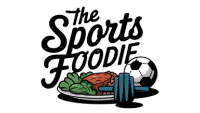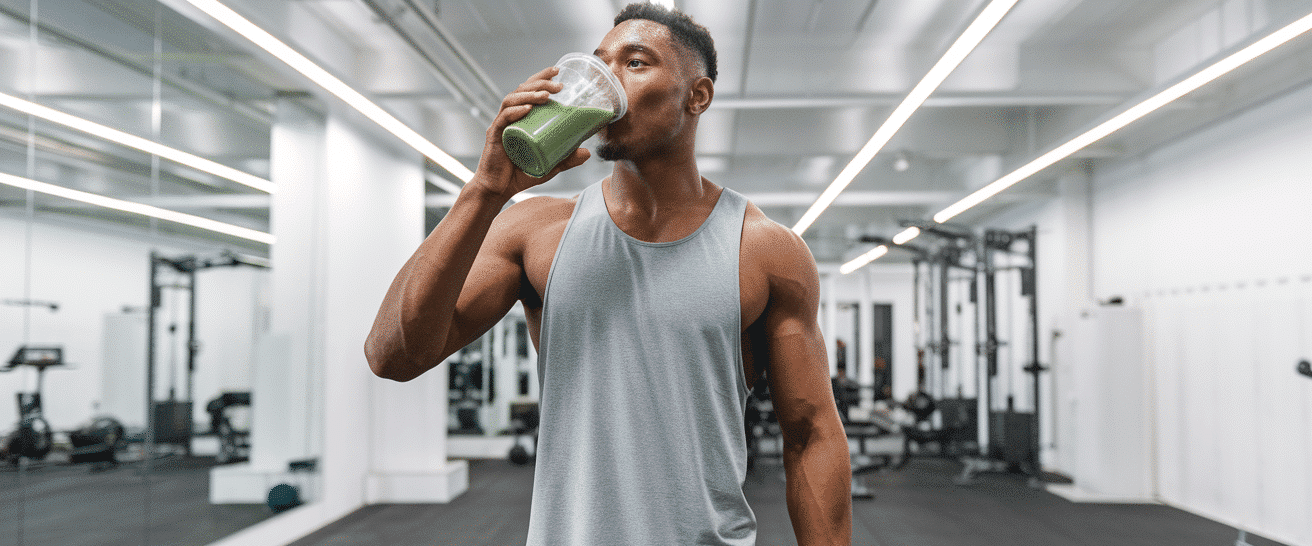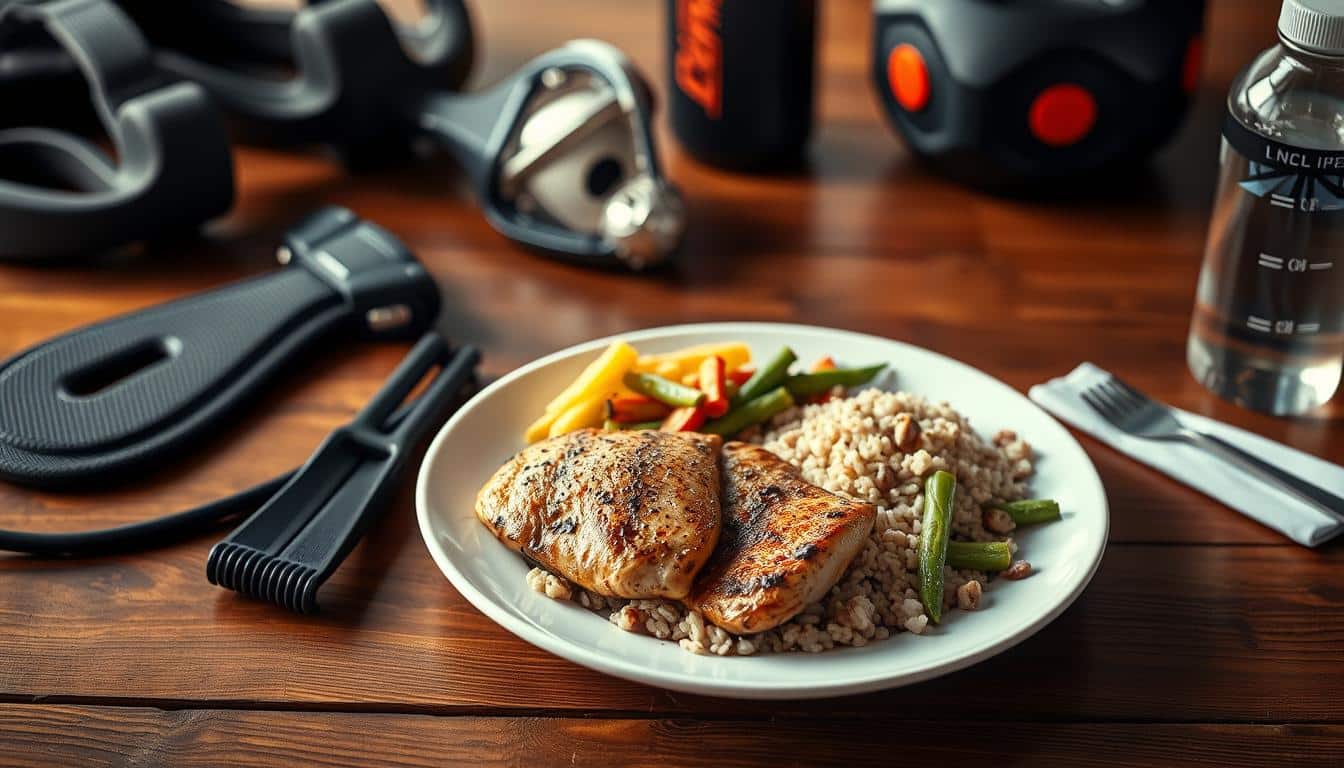Ever finish a tough training session and wonder if grabbing a snack helps or derails your progress? You’re not alone. Proper fueling after exercise isn’t just about hunger—it’s about giving your body what it needs to recover and grow stronger. Sports nutritionist Heidi Skolnik emphasizes that strategic nutrient timing helps maintain energy levels and supports muscle repair.
This guide cuts through the confusion. We’ll explore how different workouts affect your nutritional needs and share practical tips that fit real-life schedules. Learn why key nutrients matter most in that critical post-exercise window—without complicated science or rigid meal plans.
Whether you’re squeezing in morning workouts or evening sessions, you’ll discover how to create a simple eating strategy. Backed by experts who train athletes daily, these insights help you make confident choices for better health and performance.
Understanding Post-Workout Nutrition
That post-exercise fatigue isn’t just about tired muscles—it’s science in action. Physical activity sparks a chain reaction inside your body, creating both opportunity and demand for smart refueling.

What Happens to Your Body During a Workout
When you exercise, muscles tap into stored carbohydrates called glycogen. Think of it like your energy savings account. High-intensity sessions drain these reserves faster than a marathon runner burns through water. At the same time, small amounts of muscle protein break down—a natural part of building strength.
How Food Supports Recovery
Eating becomes your body’s repair toolkit. Carbohydrates restock depleted glycogen, while proteins provide amino acids to fix micro-tears in muscle fibers. This combo helps you bounce back stronger. For example, foods that support muscle repair often blend both nutrients.
Timing matters because muscles absorb nutrients best within two hours post-exercise. Skipping meals delays recovery, leaving you feeling sluggish. Hydration also plays a key role—water transports these vital nutrients where they’re needed most.
Benefits of Eating After Exercise
What you consume post-training acts like a reset button for your body. Smart fueling during this window doesn’t just satisfy hunger—it kickstarts essential repair processes that enhance physical performance long-term.

Replenishing Energy Stores
Intense activity drains glycogen—your muscles’ primary fuel source. Carbs act like premium gasoline here, refilling these reserves faster. Without them, your system might break down muscle tissue for energy, undoing hard-earned progress.
Pairing carbs with fluids boosts absorption rates. A banana with almond butter or oatmeal with berries offers quick replenishment. This combo prevents fatigue and prepares you for tomorrow’s session.
Supporting Muscle Repair
Protein delivers amino acids—the raw materials for rebuilding strained muscle fibers. Leucine-rich options like cottage cheese or whey protein trigger protein synthesis 22% faster than other sources, research shows.
Combining protein with carbs creates a synergy. The insulin spike from carbs shuttles amino acids into cells more efficiently. This dual approach reduces soreness and accelerates strength gains.
| Nutrient | Role | Best Timing |
|---|---|---|
| Carbs | Restore glycogen | Within 45 minutes |
| Protein | Repair muscle tissue | Within 2 hours |
| Leucine | Boost protein synthesis | With post-workout meal |
Delaying nutrition risks losing these advantages. Even a small snack bridges the gap until your next full meal. Greek yogurt with honey or a turkey wrap provides both nutrients busy schedules often need.
Timing Your Post-Workout Meal
Ever wonder why some athletes grab snacks immediately while others wait? Your body’s recovery clock starts ticking the moment exercise ends. Sports dietitians call this the anabolic window—a prime time when muscles eagerly absorb nutrients to rebuild stronger.
The Ideal Eating Window
Most trainers suggest consuming food within one hour post-exercise. This golden period maximizes glycogen restoration and muscle repair. High-intensity sessions like HIIT or heavy lifting demand quicker refueling—aim for 30-45 minutes.
Not all situations require clock-watching. Those who ate a balanced pre-workout meal can stretch their window to 90 minutes. Morning exercisers fasting overnight? Prioritize a protein-rich snack within 30 minutes.
| Pre-Workout Meal | Activity Level | Ideal Refuel Time |
|---|---|---|
| Full breakfast | Moderate intensity | 60-90 minutes |
| Light snack | High intensity | 30-45 minutes |
| Fasted state | Endurance training | Immediate snack + meal in 2 hours |
Adjusting Based on Your Schedule
Life doesn’t always allow perfect timing. If stuck in traffic after the gym, a protein bar bridges the gap. Had only a smoothie? Plan a full meal within four hours to sustain recovery.
Listen to energy cues—lagging stamina often signals delayed refueling. Shift workers and evening exercisers might split their post-training nutrition into two smaller meals. Consistency beats perfection here.
Key Nutrients for Recovery
Your post-training plate holds the blueprint for faster recovery. Let’s break down what truly matters in that meal—no lab coats required, just real-food solutions that fit your routine.
Protein and Carbohydrates
Protein acts like construction crews repairing muscle fibers. Sports dietitians recommend at least 20 grams—think a chicken breast or two scoops of Greek yogurt. Pair it with carbs to refuel energy stores. Aim for double the protein amount in carbohydrates: 40 grams of oats or quinoa works perfectly.
- Lean meats, eggs, or plant-based proteins deliver essential amino acids
- Whole-grain toast or roasted sweet potatoes provide lasting energy
- Combination meals like turkey wraps balance both nutrients effortlessly
Hydration and Other Essential Elements
Water does more than quench thirst—it transports nutrients to tired muscles. Add electrolytes if you’ve sweated heavily. Don’t overlook healthy fats: almonds or avocado slices help reduce exercise-induced inflammation.
Practical food pairings make hitting these targets simple:
- Grilled salmon with wild rice and steamed broccoli
- Cottage cheese topped with pineapple and chia seeds
- Trail mix with dark chocolate chips for a sweet recovery boost
Adjust portions based on your size and workout intensity. A 150-pound athlete might need 25 grams of protein, while a weekend warrior could opt for 15 grams. Listen to your body’s signals—it knows best.
Should You Eat Right After a Workout
Confused about refueling after the gym? Top sports nutrition specialists offer clear guidelines based on activity demands. Dr. Marci Goolsby from the Hospital for Special Surgery stresses balancing energy intake with exercise intensity to prevent injuries and sustain performance.
Activity-Driven Nutrition Rules
High-intensity sessions create immediate nutritional needs. Weight-lifting and endurance sports drain resources faster than casual activities. Heidi Skolnik, a veteran sports dietitian, explains: “Competitive athletes require rapid glycogen replacement—their bodies work like sponges post-training.”
| Workout Type | Nutrition Priority | Timeframe |
|---|---|---|
| HIIT/Weight Training | Protein + Fast Carbs | Within 45 minutes |
| Endurance Sports | Electrolytes + Carbs | Immediate + Meal in 2h |
| Low-Intensity Exercise | Regular Meals | No urgent need |
For weight management goals, light activities like yoga might not demand special snacks. However, ignoring hunger cues after demanding sessions risks energy crashes. Research shows combining 20g protein with 40g carbs post-training optimizes recovery for most active individuals.
Listen to physical signals rather than strict schedules. Dizziness or persistent fatigue means your system needs fuel. A hard-boiled egg with fruit or chocolate milk provides quick nourishment when time-crunched.
Special Considerations for Different Workouts
Not all sweat sessions demand the same recovery strategy. Your training style determines whether you prioritize protein-packed meals or carb-rich snacks to maximize results.
Fueling for Your Fitness Focus
Strength training breaks down muscle fibers more than cycling or running. This means protein becomes essential—think grilled chicken or a whey shake—to repair micro-tears. Weight-lifting sessions also deplete glycogen, but less drastically than endurance activities.
Long runs or bike rides lasting over an hour drain energy stores fast. Here, carbohydrates take center stage. A banana or whole-grain toast replenishes fuel efficiently. For multi-sport athletes, healthy post-training desserts like oatmeal cookies offer quick energy without guilt.
| Activity Type | Primary Nutrient | Sample Food |
|---|---|---|
| Weight Training | Protein (20-30g) | Greek yogurt + almonds |
| Cycling/Running | Carbs (40-60g) | Sweet potato + honey |
| HIIT Classes | Protein + Carbs | Turkey wrap + apple |
Short workouts under 45 minutes? Hydration matters most unless you’re doing double sessions. Basketball players and weekend warriors fall in the middle—pair nuts with dried fruit for balanced recovery.
Listen to your body’s signals. Heavy legs after spin class? Grab carbs. Sore arms post-lifting? Reach for protein. Matching nutrients to your exercise focus helps you recover smarter, not harder.
Conclusion
Finding your ideal post-training routine doesn’t require perfection—just consistency. Protein and carbs remain the dynamic duo for recovery, whether through a turkey sandwich or chocolate milk. Most active people benefit from combining 20 grams of protein with 40 grams of carbohydrates within an hour after exercise.
Not hungry post-workout? Liquid options like smoothies or Greek yogurt drinks offer easy digestion. Prioritize whole foods over supplements—they deliver nutrients plus fiber and healthy fats. A simple rice bowl with grilled chicken or peanut butter on whole-grain toast works wonders.
Your training goals and daily schedule matter. Endurance athletes might need faster carb reloading, while strength trainers focus on amino acids. Listen to energy levels throughout the day—lagging stamina often signals delayed refueling.
Remember: Total daily nutrition outweighs single meal timing. Track how different foods make you feel after various workouts. Adjust portions based on exercise intensity and personal hunger cues. Small, intentional choices create lasting progress.


